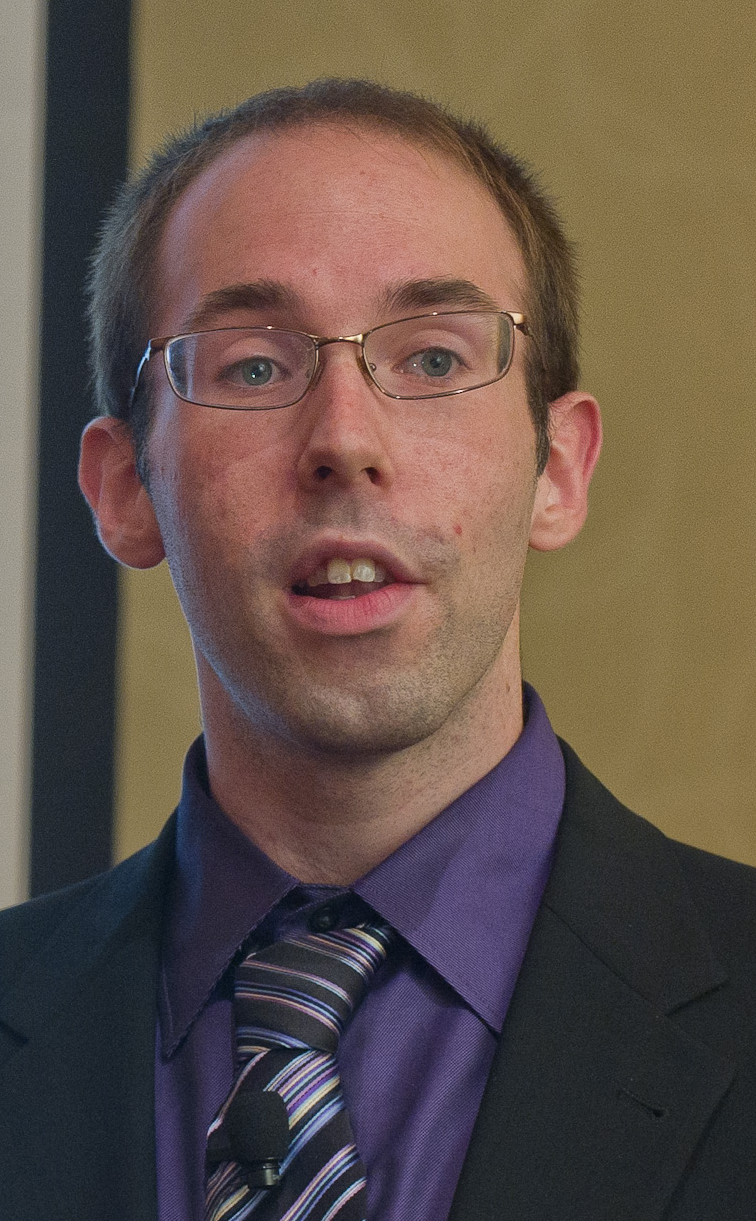Assistant Professor Matthew Reuter joins IACS in 2015
 Matthew Reuter, a theoretical chemist by training, credits a “fantastic” high school chemistry teacher with inspiring his pursuit of a career within the STEM fields of science, technology, engineering and math. Though initially he thought that his field would just be chemistry, he said that he quickly found it difficult to settle on just one… “As an undergraduate at Michigan Technological University, I ended up finishing four majors in the areas of chemistry and math, plus a minor in computer science,” said Reuter. “I didn’t really know which field I wanted to specialize in - I was so interested in them all.”
Matthew Reuter, a theoretical chemist by training, credits a “fantastic” high school chemistry teacher with inspiring his pursuit of a career within the STEM fields of science, technology, engineering and math. Though initially he thought that his field would just be chemistry, he said that he quickly found it difficult to settle on just one… “As an undergraduate at Michigan Technological University, I ended up finishing four majors in the areas of chemistry and math, plus a minor in computer science,” said Reuter. “I didn’t really know which field I wanted to specialize in - I was so interested in them all.”
But Reuter, who will be joining the Stony Brook University faculty in January 2015 as an assistant professor for both the Institute for Advanced Computational Science (IACS) and the Department of Applied Mathematics and Statistics, said that his diverse interests spanning many STEM fields converge perfectly in his new position at IACS. “This is one of the reasons why I’m so excited about joining IACS,” said Reuter. “How do we combine math, computer science and fundamental science to do really cool things? This is what computational science is all about.”
Reuter said he will use his own experiences as a college student to help shape his teaching methods, emulating the things he liked about his professors’ instruction and trying to improve upon other aspects. Overall, though, Reuter says that when it comes to teaching at Stony Brook, he will focus on stressing the subtle skills that a STEM education can provide every student, like critical thinking, problem solving and technical communication. “In an ideal world, it would be great if I could get every one of my students excited about STEM, and some will be, but it’s a challenge for every student .… So long as they’re able to practice these other skills that come along with learning STEM topics, students are still engaged and can apply that knowledge to other areas of their lives.”
Much of Reuter’s research expertise is focused on nanophase materials science, where, as he puts it, he studies “how electrons flow through really small things.” Things, he said, that can be smaller in size than a nanometer - about the length that a human hair grows in one second.
Reuter said that he is excited about his most recent paper, published in the November 14, 2014 issue of The Journal of Chemical Physics, “Finding Destructive Interference Features in Molecular Transport Junctions.” The paper describes how he and fellow researcher, Dr. Thorsten Hansen of the University of Copenhagen, used theoretical physics and mathematics to derive a rule that can predict the existence and locations of quantum mechanical features that interfere with molecular electrical circuits. This new paper answers some very important basic questions and gives scientists a clear path forward to asking better questions in this area of nanophase materials science, said Reuter. Some practical applications of this field of research include advancements in solar energy conversion and storage, as well as improvements in battery technologies.
At Stony Brook University, Reuter said that he plans on continuing his research in nanophase materials science. Besides studying STEM, Reuter said that he enjoys distance running, playing trombone and another science of sorts: baking.